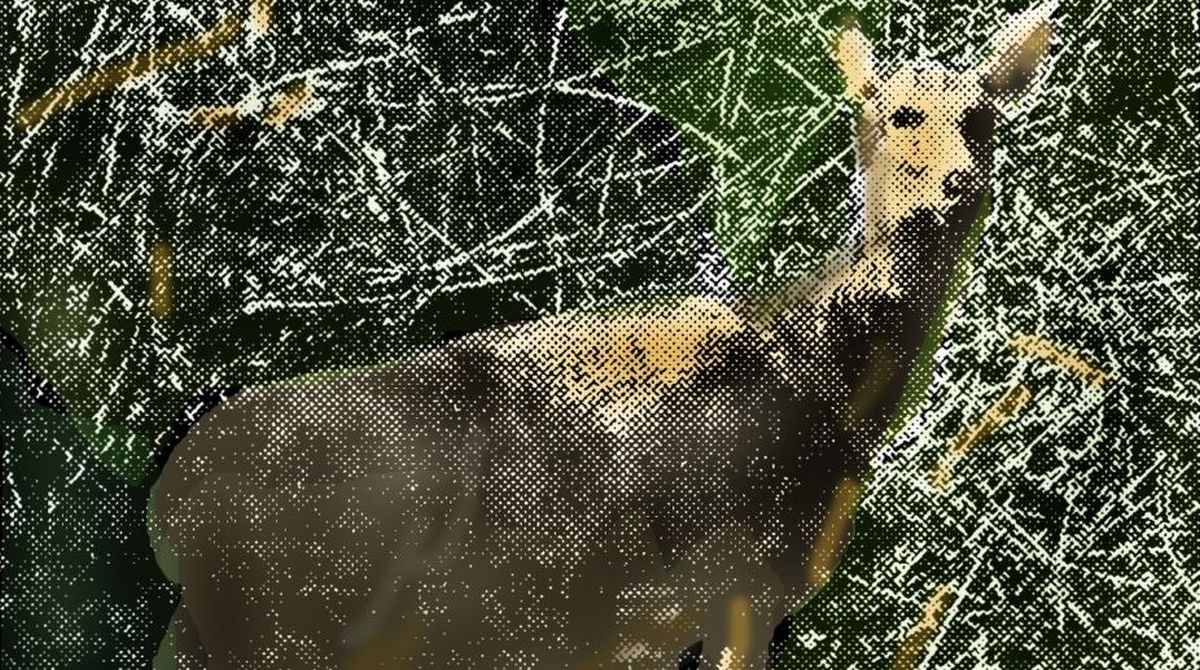At Hazaribagh on a summer day, one hardly feels the heat. There is little dust and glare, and the refreshing green of the sal forests mitigates the sultriness of the sun ~ I do not know if this is purely a visual effect or if, in fact, the thin, crisp, broad leaves of the sal do in some way cool the air. Although there is no broad sheet of water here or a river, the hillsides are easy on the eye and the outlook pleasant. But then, one sees and hears only the birds; the larger animals are conspicuous by their absence.
But they are there all right, and after sunset they come out. That uniquely Indian and charming little antelope, the chowsingha, is almost common in the scrub and sal bordering the roads at dawn and dusk, and going out in a van equipped with a spotlight after it is dark, one sees many other forest animals ~ nilgai, chital in one area, pig, hares and other creatures ~ once I saw a tiger in the distance and much more remarkable, one night an unmistakable other shot out of the roadside right in front of our van and kept running just in front for almost a minute ~ it was incredible finding an otter so far away from its element, but it was an otter all right, and I have several blurred pictures (photography of a sprinting subject by spotlight is a chancy business) to prove it.
Advertisement
However it is not these, but the sambar, that dominates the nightlife of Hazaribagh.
As soon as it gets dark, they come out of their retreats in the under shrub of the forest to the more open roadsides and hill-slopes at times in regular droves. They gaze wonderingly at the van as the spotlight hits them and then turn casually aside to avoid it and move away, in no panic but with complete self-possession, nibbling at a leaf here and a leaf there as they retreat. Incidentally, I noticed that almost all the sambar I saw here were free from the sore-patch at the base of the throat.
Why are these deer, which are not shy of the sun in places where they are undisturbed, so reluctant to show themselves by daylight at Hazaribagh and also at other sanctuaries in Bihar and elsewhere? Some people may say that somber are nocturnal, but had they watched these deer during the hottest hours of the day for half as long as I have and in half as many places, they would not have written what they did. I can assure you that sambar do not always lie up in cover during the day, but are often quite active, sometimes even in the open sun.
I have many photographs of them in bright sunlight, and some of these pictures have been published in this column.
It is true that in these areas where I have watched sambar in the sun there was tall grass or other cover handy, and often cool, shady streamside thickets, but I do not think it was because cover and shade were at hand that they were so willing to show themselves in the open by daylight. It was that there were no men on foot around,
My experience is that almost all wild animals are mistrustful of men on foot, and frequently even terrified of them and sometimes hostile to them. In Hazaribagh and in other places where the sambar are almost entirely creatures of the darkness and dim light, there are far too many men on foot during the day in the jungles.
Like many other forest animals, sambar are probably more self-confident when it is dark than when it is sunny; however, they are singularly responsive to a congenial environment, and where their instinctive fears are placated, become charmingly unafraid of humanity in motor vehicles and on elephant back, and very confiding.
Should men on foot be as much a feature of the night in their terrain as they are by day, I think the sambar would leave the area out of a sheer feeling of insecurity, but luckily for our forest animals, men are, in the main, strongly diurnal and little given be wandering about at night.
This was published on 12 January 1969











